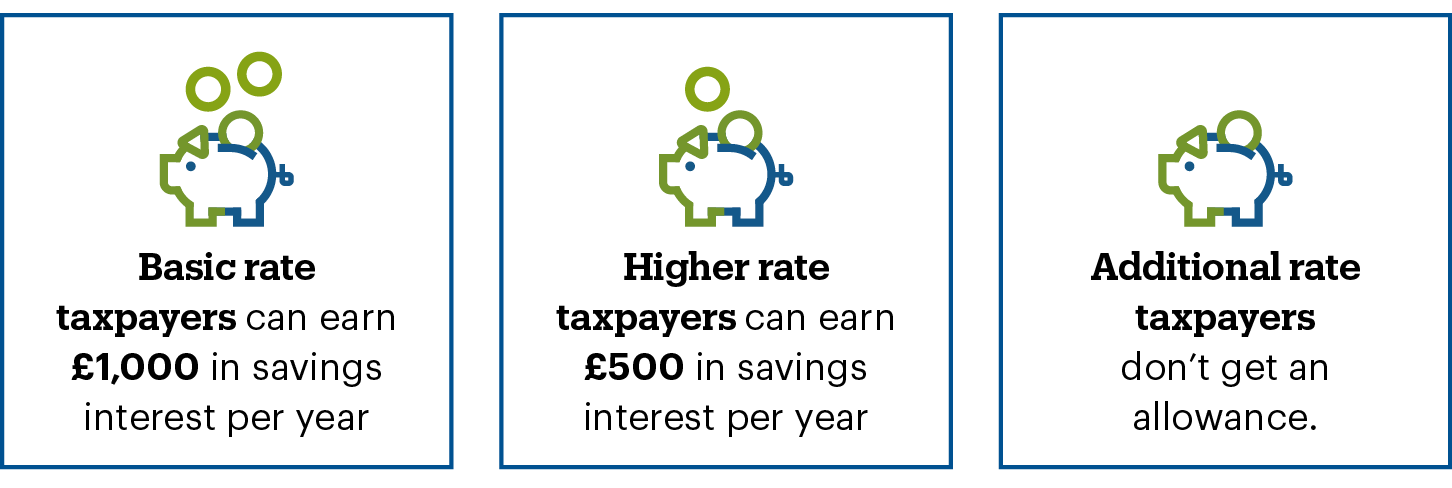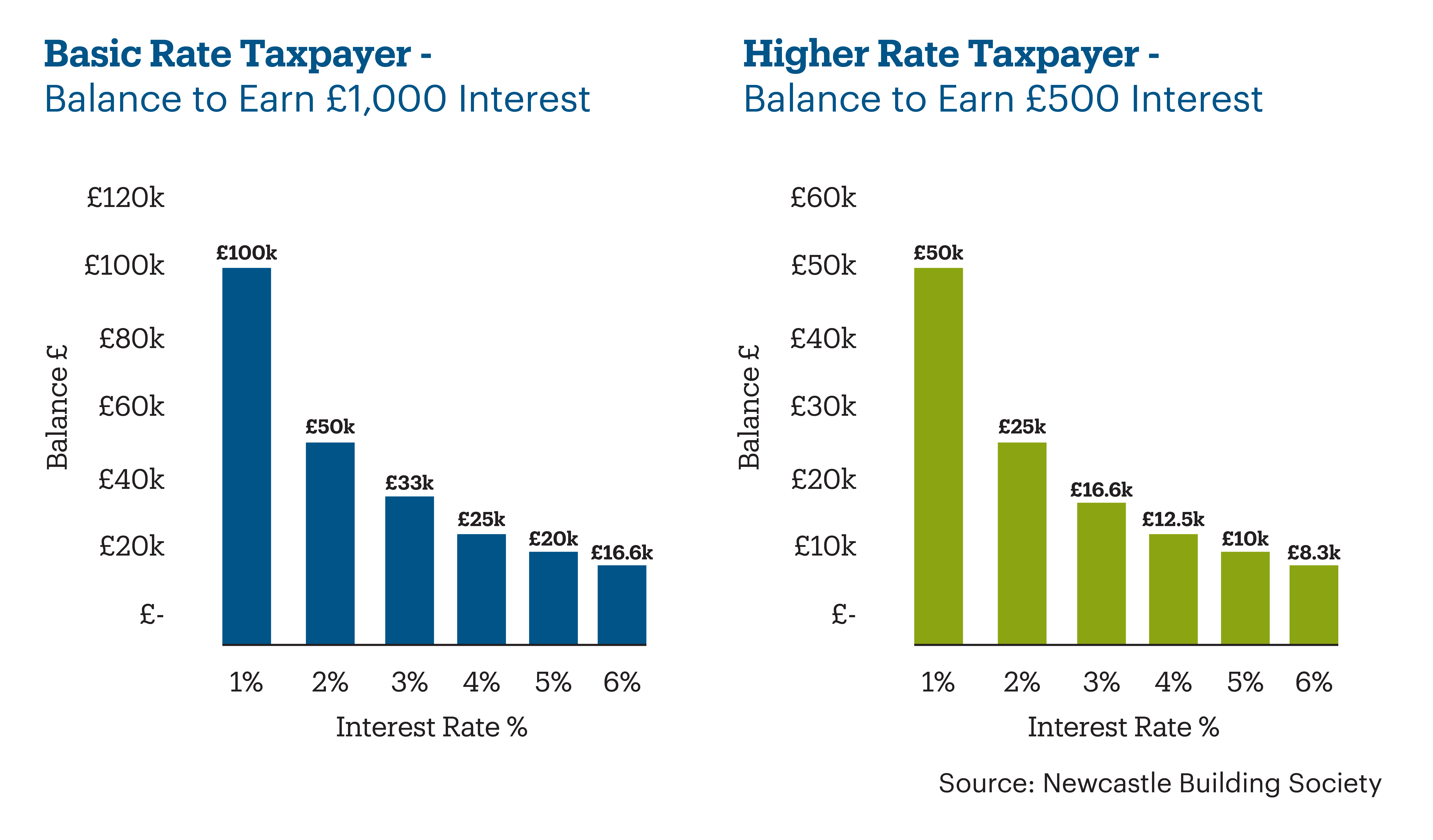Following the introduction of the personal savings allowance (PSA) in 2016, many savers have been able to save tax-efficiently without an ISA due to low interest rates.
Now that interest rates are higher, it’s important to review your savings plans to make sure you’re making the most of your tax-free allowances and saving tax-efficiently.
Below we’ll explain how the PSA works, what an ISA is, and why there are a number of reasons to consider them as part of your tax-efficient savings options.
The PSA is a tax-free allowance which lets you earn interest on your savings each year, up to a threshold, without paying tax on the interest earned, depending on the rate of income tax you pay:*

*If you earn less than £17,570 per tax year, you may be able to earn more savings interest without paying tax. Please refer to the Gov.uk website for more information.
ISA stands for Individual Savings Account and is a tax-free way of saving. Currently you can deposit up to £20,000 into ISAs each tax year, which runs from 6th April to 5th April each year, and you’ll pay no tax on the interest you earn.
If you’re interested in opening an ISA, you can view our existing range here.
Yes, you can make use of both allowances and this guide can help you make the most of each.

The charts below show how much you would need to save at interest rates between 1% and 5% to reach your PSA limit.

Please note if you invest in a non-ISA fixed term savings account with a term longer than 1 year, any interest that is paid into the account will count towards your PSA in the tax year when the funds become accessible, i.e. upon maturity.
Now that interest rates are higher, the amount of savings required to meet your PSA threshold has reduced, meaning you could now be liable to pay tax on the interest you earn. As such, you may want to consider an ISA as a way of saving tax-efficiently.
- Money in an ISA will always be protected from tax, year after year, for as long as the money remains in an ISA.
- Your ISA allowance renews each new tax year – so you can build up a bigger tax-free pot over time.
- You will always be able to access your ISA funds, however, some ISAs may carry a penalty for this.
- The value of your ISAs can be transferred to your spouse or civil partner if you pass away, protecting your tax-free savings.



